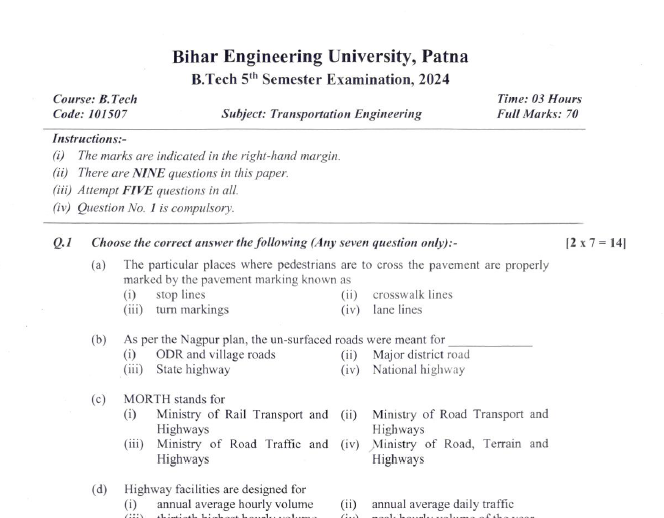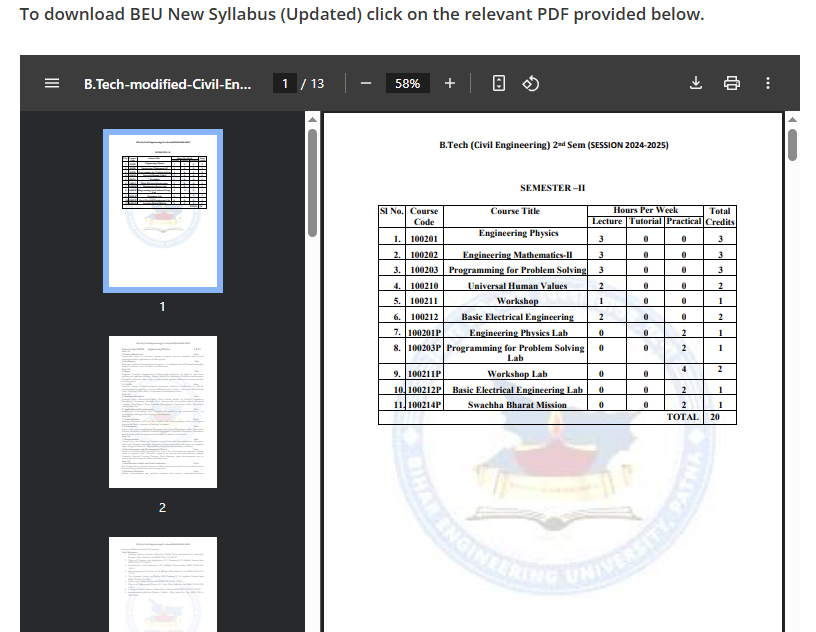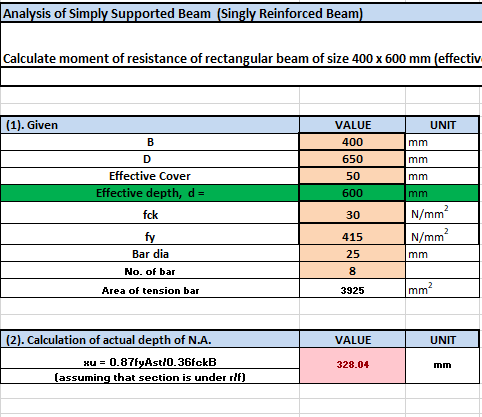Selecting a project topic for your B. Tech in Civil Engineering is a critical step in shaping your final-year experience and paving the way for your career. A well-chosen topic can not only demonstrate your technical skills but also serve as a stepping stone for further research, higher education, or a professional career in the industry. Here’s a comprehensive guide to help you choose a B. Tech project topic that aligns with your interests, industry relevance, and academic goals.
1. Identify Your Area of Interest

Start by exploring different branches within civil engineering. Civil engineering is a vast field with sub-disciplines like structural engineering, geotechnical engineering, environmental engineering, water resources, transportation engineering, and construction management.
Think about which subjects or assignments you enjoyed the most during your coursework. Selecting a project related to your preferred subjects will keep you motivated and engaged throughout the process.
Example innovating topics by area:

- Structural Engineering:
- Dynamic Analysis of High-Rise Buildings in Earthquake-Prone Areas: Model and analyze the behavior of multi-story buildings under seismic loads using software like ETABS or SAP2000.
- Seismic Retrofitting of Existing Structures: Investigate and design retrofitting methods, such as base isolators and dampers, for older buildings in seismic zones.
- Performance-Based Earthquake Engineering: Focus on designing structures to meet specific performance goals during different levels of earthquake intensity.
- Recycled Aggregate Concrete: Study the properties of concrete using recycled aggregates from construction waste and analyze its structural viability.
- Low-Carbon Concrete Mixtures: Explore alternatives to traditional cement, such as geopolymer concrete, to reduce the carbon footprint of construction.
- Biodegradable and Natural Fiber Reinforced Composites: Examine the feasibility of using materials like bamboo or hemp as reinforcement for sustainable construction.
- Modeling and Simulation of Tall Buildings Under Wind and Earthquake Loads: Conduct FEA to understand structural behavior under various loading conditions.
- FEA of Irregular Building Structures: Study how irregular geometries affect the stress distribution and performance of buildings, particularly under seismic conditions.
- Optimization of Structural Components Using FEA: Investigate and optimize the dimensions and materials of beams, columns, and other components to reduce cost and weight without compromising safety.
- Design of Long-Span Bridges Using Cable-Stayed and Suspension Systems: Develop models for various bridge types and analyze their structural stability.
- Vibration Analysis and Control in Bridges: Study how vibrations affect bridge stability and propose solutions, such as tuned mass dampers, to minimize vibration effects.
- Retrofit Strategies for Old Bridges: Explore reinforcement techniques for existing bridges to increase load capacity and meet current safety standards.
- Self-Healing Concrete: Research the applications of self-healing concrete that can repair minor cracks on its own, enhancing the durability and lifespan of structures.
- Blast-Resistant Building Design: Study the design of structures that can withstand blast loads, relevant for military or high-security facilities.
- Cyclone and Flood-Resistant Structures: Design structures in coastal areas to resist high winds and flooding associated with cyclones.
- Fire-Resistant Structural Design: Analyze materials and designs that improve the fire resistance of critical infrastructure, such as hospitals and emergency response centers.
- Machine Learning for Load Prediction in High-Rise Buildings: Develop algorithms to predict load distribution and help design resilient, efficient structures.
- Damage Detection and Classification in Structures Using ML: Apply computer vision and machine learning techniques to detect and classify damages in structures automatically.
- Wind Load Analysis for Tall Structures: Study the aerodynamic effects on tall buildings and design solutions to improve stability.
- High-Strength Concrete Applications in High-Rises: Investigate the benefits and limitations of using high-strength concrete in skyscrapers to reduce cross-sectional dimensions.
- Foundation Design for High-Rise Buildings: Explore advanced foundation techniques for skyscrapers, focusing on soil-structure interaction and load-bearing analysis.
- Environmental Engineering:
- Plastic Waste Recycling: Study innovative recycling methods for converting plastic waste into construction materials like bricks or tiles.
- Organic Waste to Energy Conversion: Explore anaerobic digestion or other biological processes to convert organic waste into biogas.
- Eco-Friendly Building Materials: Investigate the use of materials like fly ash, slag, or recycled aggregates in construction to reduce environmental impact.
- Green Roof and Wall Systems: Design sustainable green roofs or walls that improve building insulation and reduce urban heat.
- Carbon-Sequestering Concrete: Test concrete mixtures that absorb CO₂ from the atmosphere, contributing to lower greenhouse gas emissions.
- Phytoremediation for Heavy Metal Removal: Study the use of plants for absorbing heavy metals in contaminated soils.
- Biodegradable Soil Additives: Investigate the effect of biodegradable polymers on soil moisture retention and plant growth.
- Groundwater Recharge Techniques: Design a system for recharging groundwater using rainwater harvesting in arid or drought-prone areas.
- GIS-Based Pollution Mapping: Develop a Geographic Information System (GIS) map to monitor and assess pollution levels in a specific region.
- Environmental Impact Assessment (EIA) for Infrastructure Projects: Conduct a comprehensive EIA for an infrastructure project like a highway, assessing potential impacts on the environment and biodiversity.
- Habitat Restoration Modeling: Use GIS and remote sensing to create a model for restoring degraded habitats and monitoring ecological recovery.
- Greywater Recycling Systems: Design a low-cost system for recycling greywater (e.g., from sinks and showers) for non-potable uses.
- Rainwater Harvesting Optimization: Develop a model to optimize rainwater harvesting in urban buildings or communities.
- Water Conservation in Agriculture: Explore efficient irrigation techniques like drip or sprinkler systems to reduce water use in agriculture.
- Remote Sensing for Environmental Health Monitoring: Use remote sensing techniques to monitor vegetation health, water quality, or land-use changes over time.
- Transportation Engineering:
- Traffic Flow Analysis and Optimization
- Intelligent Transportation Systems (ITS)
- Public Transportation Optimization
- Sustainable Transportation Planning
- Pavement Design and Material Innovations
- Road Safety and Accident Analysis
- Pedestrian and Bicycle Safety
- Highway Engineering and Geometric Design
- Transportation Demand Forecasting
- Geotechnical Engineering:
- Soil Stabilization Techniques: Study various soil stabilization techniques, such as the use of fly ash, lime, and cement for enhancing soil strength.
- Landslide Risk Assessment and Mitigation: Investigate triggering factors, assess slope stability using software (e.g., GeoStudio or PLAXIS), and propose mitigation strategies.
- Use of Geosynthetics in Slope Stabilization: Experiment with various geosynthetics (e.g., geotextiles, geogrids) and analyze their influence on slope stability under different loading conditions.
- Dynamic Soil Properties and Seismic Site Response Analysis: Perform laboratory tests on soil samples, model site response to seismic waves, and propose design recommendations for structures in seismic zones.
- Improvement of Bearing Capacity for Foundations: Investigate different techniques to enhance soil bearing capacity, particularly in weak soil zones.
- Soil-Structure Interaction (SSI) for High-Rise Buildings: Study the interaction between soil and structural foundations in high-rise buildings under different loading conditions.
- Environmental Impact Assessment of Landfills on Soil and Groundwater: Perform soil and water sampling around a landfill, assess contamination levels, and propose mitigation strategies.
- Investigation of Seasonal Effects on Soil Properties: Study how seasonal changes (temperature, rainfall) affect soil properties such as moisture content, strength, and permeability.
2. Consider Industry Relevance
- Choose a topic that aligns with current industry trends to make your project more appealing to potential employers. Civil engineering evolves continuously, with new materials, technologies, and methodologies constantly being introduced.
- Research emerging trends in civil engineering such as smart cities, sustainable construction practices, renewable energy integration, or AI and machine learning applications in infrastructure.
- Topics with high industry demand could include drone surveying, 3D printing in construction, or smart materials that adapt to environmental changes.
3. Seek Guidance from Faculty and Mentors
- Consult your professors and academic advisors, as they can offer insights into trending topics, resources, and research areas.
- Many faculty members may have ongoing research projects or industry connections that could provide inspiration for your project.
- Consider discussing with alumni who have successfully completed their projects. Their experience can help you understand project challenges and potential improvements.
4. Understand Resource and Time Constraints
- Assess the resources available to you, including laboratory facilities, software, equipment, and funding, as these will impact your project’s feasibility.
- Choose a topic that fits within the timeline provided by your academic program. Some projects, such as field studies or experimental work, may require extended timeframes or specialized equipment.
- Projects involving extensive data collection or fieldwork may face constraints due to weather, permissions, or accessibility. Make sure to factor these in early.
5. Focus on Problem-Solving
- Aim for a topic that addresses a real-world problem, as these projects are more impactful and may even attract the attention of industry stakeholders.
- Projects that solve specific issues in construction, urban planning, or environmental management often stand out and add practical value to your academic portfolio.
- Example problem-solving topics:
- Reducing urban flooding through sustainable drainage systems.
- Addressing air quality issues with innovative materials for urban planning.
- Developing low-cost housing solutions with locally sourced materials.
6. Consider Research and Innovation Opportunities
- Projects that explore new technologies, innovative methodologies, or novel applications can be beneficial for students interested in pursuing research or higher studies.
- Look into recent academic papers, journals, and conferences related to civil engineering. A literature review can reveal gaps in existing research or potential areas for innovation.
- Example research-focused topics:
- Finite Element Analysis of unconventional materials for construction.
- Investigating soil stabilization techniques for specific geographic conditions.
- Predictive modeling for earthquake resilience in high-risk areas.
7. Use Available Software and Tools
- Civil engineering projects often require specialized software, so consider selecting a topic that allows you to gain hands-on experience with industry-standard tools.
- Popular civil engineering software includes AutoCAD, STAAD Pro, ETABS, Primavera, and ANSYS. Proficiency in these tools will be beneficial for both your project and future job prospects.
- Choose a project that allows you to integrate software skills, such as 3D modeling of structures, hydraulic modeling, or traffic simulation.
8. Discuss with Peers and Collaborate
- Brainstorm with your peers to explore different ideas. Sometimes, collaborative discussions can reveal new perspectives or refine your project’s scope.








